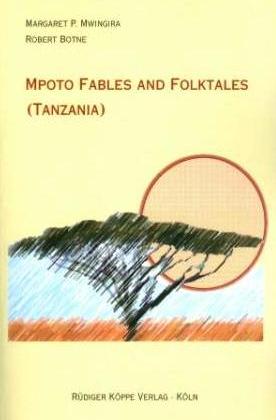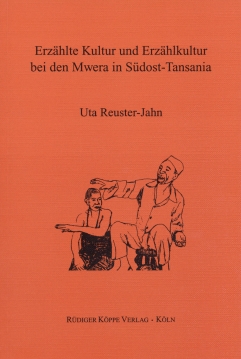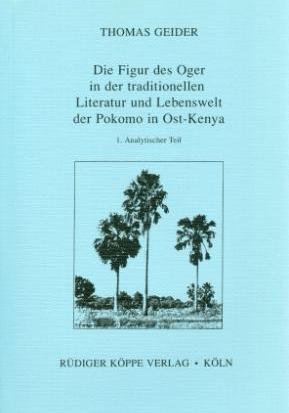


Mpoto Fables and Folktales (N.14, Tanzania)
Author: Margaret P. Mwingira, Robert Botne. Series edited by: Wilhelm J.G. Möhlig †.
Series: WK Verbal Art and Documentary Literature in African Languages Volume 38
20188 pp. Roman, 121 pp.
Text language(s): English
Format: 160 x 240 mm
270 g
Paperback
€ 34.80
Buy 'Mpoto Fables and Folktales (N.14, Tanzania)' as a downloadable PDF document directly from our online shop »
Order 'Mpoto Fables and Folktales (N.14, Tanzania)' as print edition »
The Mpoto people are located along the coastal area of Lake Nyasa in the Ruvuma Region, Mbinga District, of southwestern Tanzania. Neighbours include the Manda to the north and Matengo to the east. The language is classified as Niger-Congo > Atlantic-Congo > Volta-Congo > Benue-Congo > Bantoid > Southern > Narrow Bantu > Central > North > Manda (Guthrie code N.14). The population is relatively small, estimated at about 88,000, according to data of the Joshua Project (2018): https://joshuaproject.net/lan guages/mpa.
The WaMpoto derive their name from the name Mpoto which interpreted means “north”. This group is a branch of the Matengo which during the Ngoni invasion settled on the hills to the north of Songea. Their language is very close to that of the Matengo, perhaps due to their common origin. They lived in villages which were headed by chiefs (jumbes). During colonial times, these chiefs were appointed by the government. Farming is their main way of life, especially subsistence farming. They, too, had a communal social set up. Work was done communally.
In former times, they worshipped spirits especially on gravesites. They were opposed to Christianity due to their entrenchment in this kind of worship. There are a few who still do it today though not openly. Present Christianity is nominal with the majority being Roman Catholics.
This volume presents fables and folktales as related by the co-author and members of her family, who range in age from early 30s to late 70s. Each tale is analyzed and glossed linguistically in order for readers to have the opportunity to compare the broad translation with the specific words used in the text. ChiMpoto is a stress accent language for the most part, so accent is not marked. Audio material of the language is offered by the authors on the webpages of their university: https://scholarworks.iu.edu/dspace/handle/2022/21830
Under these links you will find descriptions of further smaller or endangered Bantu languages in Tanzania, as well as text editions of African verbal art:
Accompanying material:
- « Les deux amis, les tresses, et la viande » – Contes balant du Sénégal
(ISBN 978-3-89645-740-0 ) - Catalogue of the Khoisan Folktales of Southern Africa
(ISBN 978-3-89645-870-4 ) - Die Figur des Oger in der traditionellen Literatur und Lebenswelt der Pokomo in Ost-Kenya
(ISBN 978-3-927620-60-5 ) - Folktales of the Kxoe in the West Caprivi
(ISBN 978-3-89645-081-4 ) - Legenden, Märchen und Fabeln aus Ruanda
(ISBN 978-3-89645-743-1 ) - Luba-Sprichwörter
(ISBN 978-3-927620-61-2 ) - Luhala lwa Wavidunda – Vidunda Wisdom (G.38)
(ISBN 978-3-89645-741-7 ) - Oromo Oral Poetry Seen from Within
(ISBN 978-3-89645-276-4 ) - Swahili Proverbs from the Democratic Republic of the Congo
(ISBN 978-3-89645-744-8 ) - Tales, Fables and Narratives of Rwanda
(ISBN 978-3-89645-745-5 ) - Verbal Art of the Fon (Benin)
(ISBN 978-3-89645-288-7 )
Cross-reference:
- A Grammatical Sketch of Chindamba
(ISBN 978-3-89645-706-6 ) - Erzählte Kultur und Erzählkultur bei den Mwera in Südost-Tansania
(ISBN 978-3-89645-268-9 ) - Finding Female Voice
(ISBN 978-3-89645-282-5 ) - Life and Poems of Bi Zainab Himid (1920–2002) / Maisha na Tungo za Bi Zainab Himid (1920–2002)
(ISBN 978-3-89645-286-3 ) - Motivforschung in Volkserzählungen der Kanuri (Tschadsee-Region)
(ISBN 978-3-89645-273-3 ) - Mwera–Swahili Dictionary (P.22) / Kamusi ya Kimwera–Kiswahili
(ISBN 978-3-89645-711-0 ) - The Ha Language of Tanzania
(ISBN 978-3-89645-027-2 ) - The Kagulu Language of Tanzania (G.12)
(ISBN 978-3-89645-704-2 )
| « back | Print version | [top] |
 Books
Books Audio
Audio Biographies
Biographies Series
Series Festschrifts
Festschrifts Journals
Journals